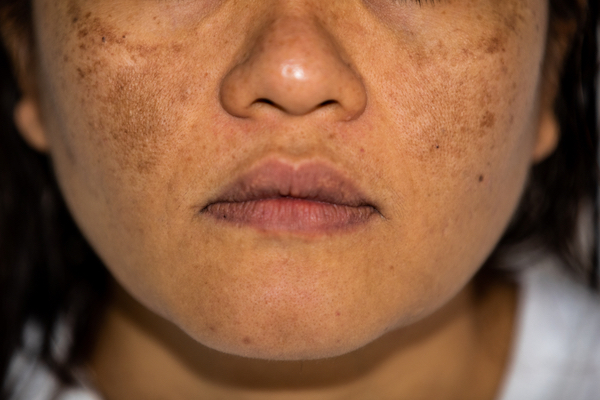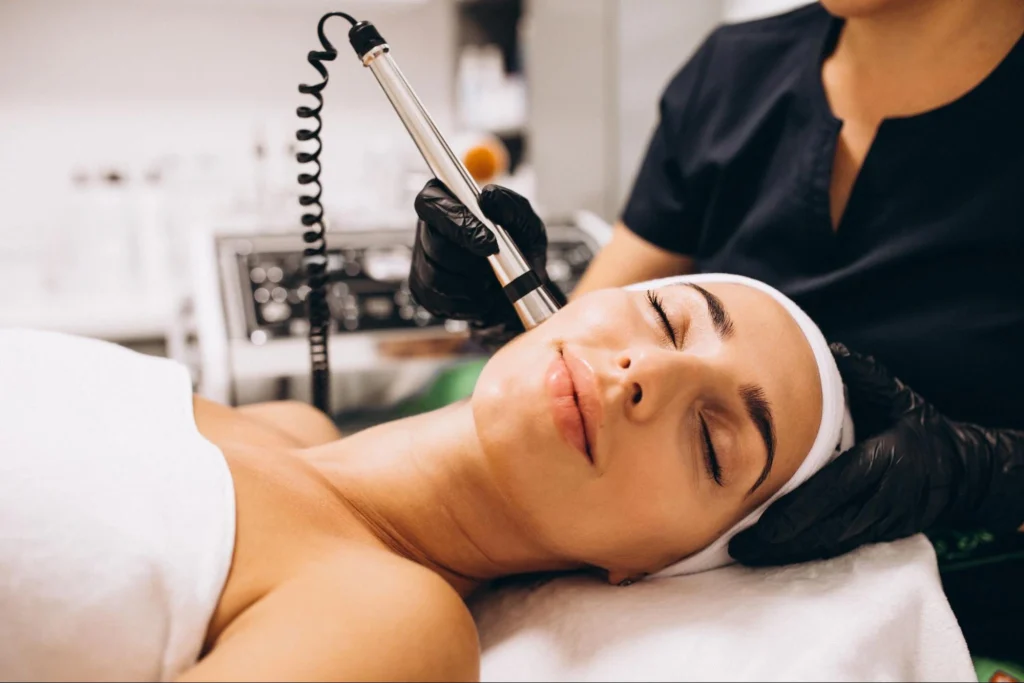Hyperpigmentation on cheek
Hyperpigmentation is a term used to describe patches of skin that become darker than the surrounding skin. It can affect all skin types but is especially common on the skin of a darker tone.
If hyperpigmentation appears on your face, you will probably be conscious of it as it feels highly visible. So, if you are unhappy about the speckled skin on your cheeks and want to reduce the effect, what can you do?
Our team of skincare experts have put together this beginner’s guide to treatment for hyperpigmentation on cheeks to help you decide the best option for you.
What is hyperpigmentation?
Pigmentation describes the colouring of the skin. Any patch of skin that appears darker than the rest in that area is described as affected by hyperpigmentation.
Hyperpigmentation is common and often harmless, although you should always get any changes in the appearance of your skin checked by a medical professional.
Hyperpigmentation is caused by an overproduction of melanin, the pigment that determines your skin’s colour. It can occur anywhere on the body but is most common in the areas often exposed to the sun, such as the arms, hands and face. Hyperpigmentation occurs more often in dark skin than in fair skin, as the pigmentation is stronger.
Types of hyperpigmentation on cheeks
There are several types of hyperpigmentation:
- Age spots — also known as sun spots, liver spots or solar lentigines. They are caused by exposure to the sun and are most common in older adults or those exposed to the sun for extended periods. Age spots are brown or black patches usually found on the areas of the body regularly exposed to UV light, such as the face, neck, hands and arms.
- Freckles — ephelides freckles are the result of exposure to sunlight during the summer and usually fade by the winter. Lentigines freckles are darker and more permanent. Both are a type of hyperpigmentation.
- Melasma — also called chloasma, pregnancy melasma and the pregnancy mask. Large patches of darkened skin appear, typically on the forehead, face and stomach. Melasma is most common in women and is caused by fluctuations in hormone levels and pregnancy.
- Post-inflammatory hyperpigmentation (PIH) — the skin produces extra melanin in response to injury or irritation, causing PIH to appear as beige, brown or blue-grey patches on the skin. Common causes include burns, razor bumps, infections, insect bites, acne and eczema. It can appear anywhere on the body.
Treatments for hyperpigmentation on cheeks
The most suitable type of treatment for you will depend on which type of hyperpigmentation you have.
For hyperpigmentation on the cheeks, there are two options:
1. A chemical peel
A medically graded chemical peel designed to remove all forms of facial hyperpigmentation is an extremely effective way of treating hyperpigmentation on the cheeks. It involves applying a chemical solution to the affected areas to remove dead skin cells (exfoliation) and stimulate the growth of new skin cells. Our Cosmelan De-pigmentation Peel also contains anti-ageing substances that help to reduce fine lines and pores.
2. Microneedling
Microneedling creates controlled micro injuries on the skin’s surface. The healing process stimulates collagen and elastic production that repairs the damage to the skin on the cheeks. Microneedling reduces superficial pigmentation, enlarged pores and pitted scars and improves the skin’s texture.
How to prevent hyperpigmentation
To avoid hyperpigmentation recurring, incorporate these self-care practices into your daily routine:
- Don’t pick or squeeze spots and bites.
- Moisturise your skin to help maintain its protective lipid (fat) barrier.
- Always wear sun protection with a sun protection factor (SPF) of 30 or greater — every day, all year round.
- Incorporate antioxidant skincare into your daily cleansing routine.
There is no way to eradicate the risk of hyperpigmentation. Some people may be more prone to it because of their sex, ethnicity or skin type. But taking these steps can help to reduce the risk.
Shumaila’s aesthetic and laser clinics in London and Essex provide the most advanced laser hair removal, suitable for almost all skin types. Book your FREE consultation today to find out if you are suitable for permanent laser hair removal.


